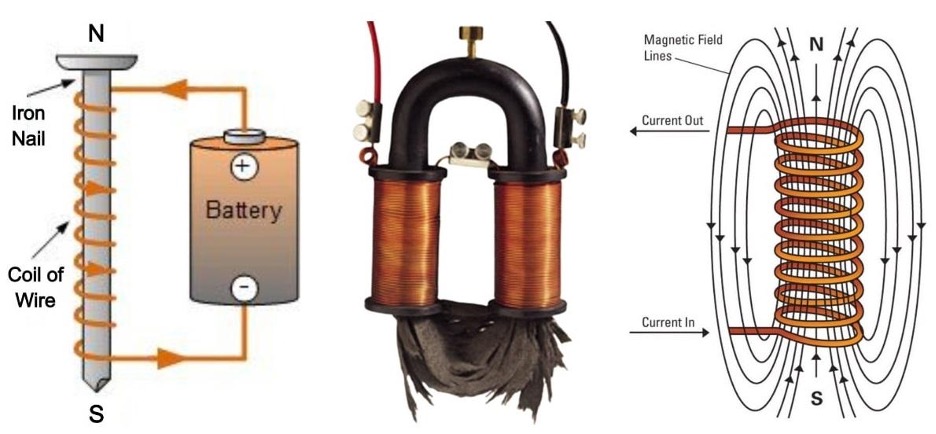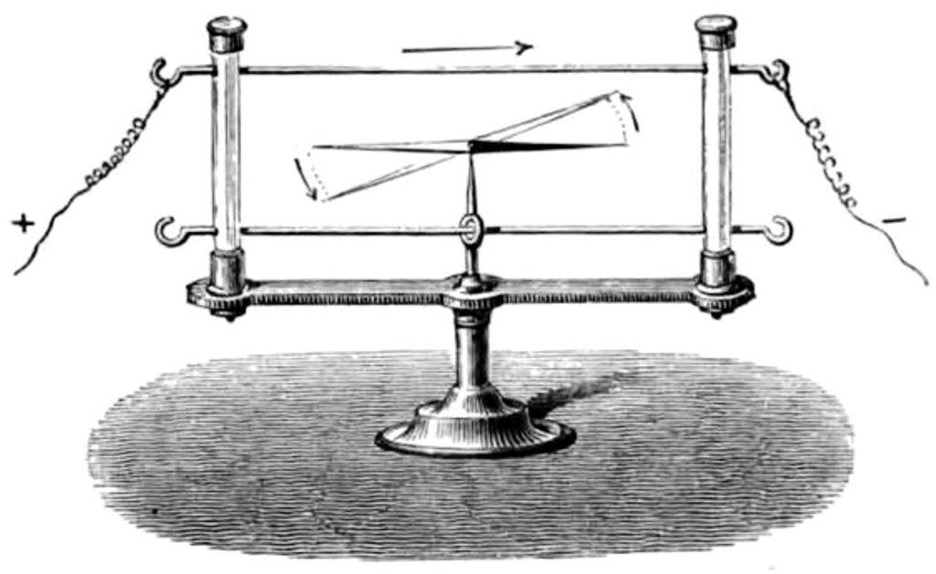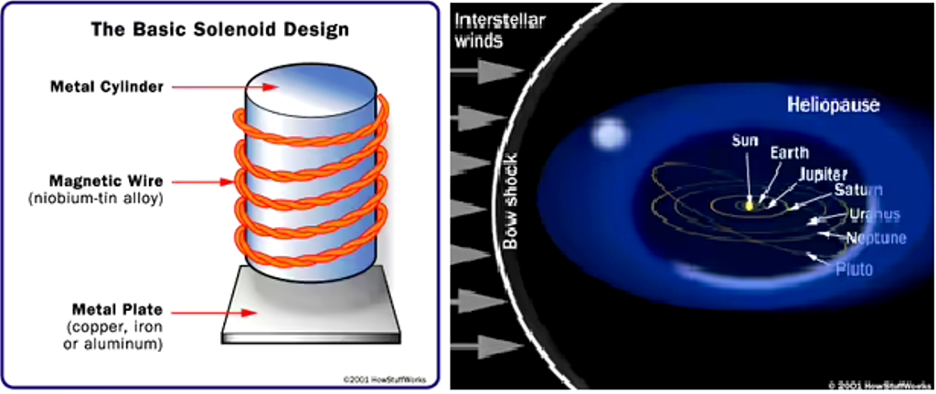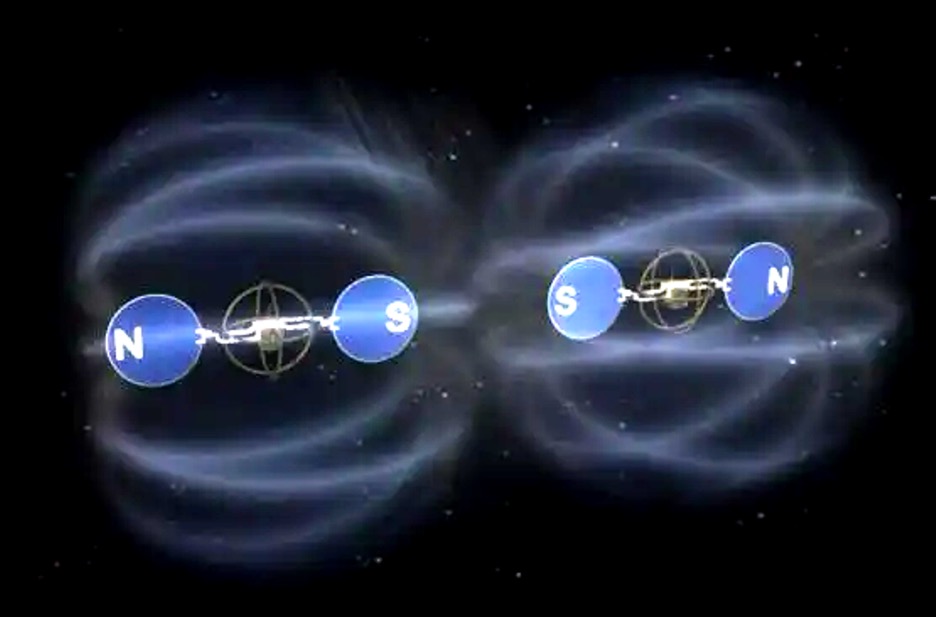3 Main Uses of Electromagnets in Space Industry
30th Mar 2023
We rarely think about their existence, even though we have been using them for a long time. Many of us have little idea of their capabilities, and some have long forgotten what their functionality is based on. And what are they? Electromagnets.
We cannot rule out the uses of electromagnets, because, without them, the world would become uncomfortable and boring. Moreover, we constantly find new jobs for them. In this article, you will learn what are the uses of electromagnets, including in the space industry.
What are Electromagnets

An electromagnet is a device that creates a magnetic field when an electric current passes through it. The design usually includes a ferromagnetic core and an aluminum or copper alloy winding. To reduce Foucault’s current losses, sheets are used. In devices designed to create mechanical forces, there is an anchor.
Electromagnets – history and types

The phenomenon of electromagnetism (the interaction between electricity and magnetism) was discovered in 1820 by the Danish scientist Hans Ørsted. But as it often happens, the first electromagnet appeared thanks to an experiment.
In 1827, Professor Joseph Henry decided to demonstrate electromagnetism to his students using a “galvanic multiplier.” This is an invention of the German scientist Johann Schweiger, in which, instead of a straight wire, a copper wire, folded into several turns, was used. British researcher William Sturgeon had found that this coiling enhanced the effect. But the problem of circuits remained.
According to legend, Henry insulated the wires, including the winding, with ribbons from his wife’s silk dress. In addition, he made a set of small coils connected in parallel instead of one large coil. As a result, the device demonstrated enough power for everyday uses of electromagnets!
Four years later, he introduced a 10-kilogram electromagnet, with which it was possible to lift an iron object weighing 350 kg. And after a couple of years, the lifting capacity grew to one and a half tons! So it became clear to everyone that electromagnets have a great future.
Today there are three types of electromagnets:
- Neutral direct current, the force of attraction of which depends only on the magnitude and not on the direction of the current in the winding.
- Polarized DC, with a working magnetic flux, which is created by the control winding, and a polarizing one, which is most often created by additional magnets. The operation of the device depends on both the magnitude and direction of the current in the winding.
- Alternating current, in which the magnetic flux changes in magnitude and direction.
They are also distinguished by:
- the method of switching on the windings – with parallel and series windings;
- the nature of the work — in long-term, intermittent, and short-term modes;
- speed of action — fast-acting and slow-acting.
And then there are the “superconductive” ones, which consist of a rod wound with materials with very low resistance (niobium-titanium, magnesium diboride, etc.). They are kept at cryogenic temperatures in order to conduct much higher currents without loss.
What are 5 examples of electromagnets?
Scientists have learned how to measure and create powerful electromagnetic fields. And electromagnets have become a common element of electronic and industrial equipment. Uses of electromagnets in daily life include all kinds of relays, switches, electrical machines, measuring instruments, clutches, etc.
How do we use electromagnets?

An electromagnet has many uses because the force of its attraction can be controlled. That is why these devices are widely found wherever an interaction based on magnetism is required.
Most common uses of electromagnets
The most common uses of electromagnets are in electrical engineering and industrial automation, from giant equipment to miniature electronic components. They are used in magnetic resonance imaging. They are indispensable for scientific research and experiments as elements of various kinds of spectrometers and elementary particle accelerators.
What are real-life uses of electromagnets?
They are used in a wide variety of actuators. They can be found in music and audio equipment, automotive fuel injectors, railway infrastructure, and cranes. Likewise, they are also needed in separators and electronic paintball markers. Without them, electric motors, generators, and magnetic levitation trains cannot work.
Uses of electromagnets in everyday life
We use the multiple civilization achievements based on electromagnets. These are automatically closing doors, slot machines, attractions, matrix printers, and many other devices.
What everyday items have electromagnets?
If you look closely, there are a lot of them around us. They are in consumer electronics, electric stoves, electric and magnetic locks, electric switches, toothbrushes, levitating toys, etc. The list of uses for electromagnets can go for pages.
How Does the Space Industry Use Electromagnets?
Want to know what are some uses of electromagnets outside the Earth? Today, they are most intriguing.
Uses of electromagnets in satellites
Space engineers explore new types of electromagnets and their uses. In particular, a group of NASA physicists from the Kennedy Space Center proposes to use the interaction of oscillating magnetic fields to control satellites in orbit, namely, their orientation and stabilization systems.
So, for example, we could launch several small mirrors and assemble them into a telescope that can easily be adjusted. And a spacecraft can, for example, land on an asteroid without bouncing, just like a magnet sticks to a refrigerator.
Rocket Engines

US Department of Energy engineers are developing a propulsion system that uses supercooled superconducting magnets. If the fast impulses they create are working in one direction, you get an engine capable of speeds reaching about 1% of the speed of light.
They are also working on a nuclear space reactor, the thermal energy of which will be converted into electrical energy. This will enable flying in deep space. A spacecraft with a magnetic sail around artificial equilibrium points (AEP) will be able to move due to the interaction between the solar wind and the magnetosphere, created by a coil with a superconducting current on board.
Using electromagnets for formation flights

In this modern scenario of using electromagnets, every spaceship in the fleet will be equipped with superconductor coils. By adjusting the current, it will be possible to swap the poles, attract spaceships to each other, or keep them at the required distance. The influence of the natural magnetic field of the Earth can be compensated with smaller, secondary electromagnetic coils.
Using electromagnets to clean up space debris

Since most of the items in orbit are made of non-magnetic aluminium, conventional rubbish collection methods do not work. Researchers at the University of Utah joined the world’s search of the most effective space debris removal method and intend to use a set of electromagnets to move non-magnetic objects remotely.
The uses of electromagnets involve a non-contact method of manipulation of any electrically conductive object. The rotating magnetic field induces eddy currents in the conductor. This creates a secondary magnetic field that opposes the initial movement and slows down the movement of the magnet. This technique can be used to safely slow down tumbling debris and then tow it for disposal.
Conclusion
Despite its age, the electromagnet remains an important component of modern technology. The electromagnetism principle finds its way into completely unexpected uses of electromagnets, so we should expect new discoveries, innovative devices, and systems. And we will definitely talk about them in our new posts.






Thank you for your comment! It will be visible on the site after moderation.